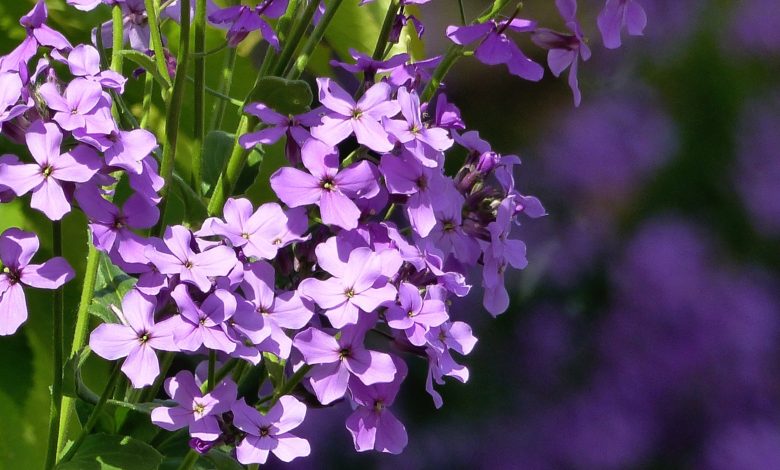What You Need to Know About the Gillyflower

Cheiranthus cheiri, popularly known as gillyflower, is a flowering plant from the Brassicaceae (Cruciferae) family. The plant is native to Europe, especially the Mediterranean region, and is widely grown around the world. It is mostly grown as a garden plant. It is a common medicinal herb in Persian medicine (PM) but is not popular in modern medicine. Gillyflower, Aegean gillyflower, common gillyflower, gele muurbloem, handflower, perennial gillyflower, blister sweat, hedge mustard and cheir are some of the well-known names of the gillyflower plant. The name of the breed comes from the Greek word Eryo, which means to drag. A special adjective comes from the Greek word cheir, referring to an ancient tradition from the Middle Ages where wall flowers were hand carried in small bouquets to festivals or other events. The commonly used name for Erysimum is Shebboy, because these are often seen on old fortifications or cliffs.
Apart from this, what is interesting is that this plant is still sold under the old name Cheiranthus. The name cheiranthus comes from the Greek word cheir, meaning hand, and anthos, meaning flower, and refers to a medieval tradition in which flowers were often hand-carried during festivals. The species was previously divided into two genera, Erysimum and Cheiranthus, but today it is classified under the genus Erysimum.
Plant Description
The gillyflower is an upright, wood-based, evergreen, herbaceous perennial grown as a biennial that normally grows about 12 to 18 inches tall and 12 inches wide. The plant often grows near the sea, on cliffs, old walls, and rocks. It prefers light or sandy, medium-loam and heavy or clay soils. While the plant needs a properly drained soil, it can also grow in soils containing less nutrients. This plant is known for its ability to grow in small pockets of sandy soil in stone walls, as its common name means gillyflower, and loves sharp soil drainage. The plant has a woody taproot. The trunk is upright, woody, leafy and simple or usually more branched than at the base. Tomentotic, star-shaped branched bifurcated trichomes.
Gillyflower’s Leaves
Basal leaves are simple, densely rose-shaped, linear oblanceolate-oblong. It is about 40-90 mm long and 4-10 mm wide. Base is weakened, margin is full or slightly dentate, apex is acute, pedicel too short. Cauline leaves look like base leaves that shrink towards the shoot, their distribution is dense.
Gillyflower ‘s Flowers
The flowers are bisexual, yellow and bright orange in color. Approximately 2-2.5 cm, pedicel is upright and about 5-8 mm long, even giving fruit up to 15 mm long. Four-leaf, obovate-spatulate, base wedge-shaped, entire margin, apex broad or bottom margin, about 18-22 mm long. And it is 10-14 mm wide, with wide claws. Stamens 6, tetradynamic, about 9-14 mm long, fibers simple, linear-oblong, about 3-4 mm long. The ovary is superior, linear, ellipsoid-cylindrical, sessile, bicarpellar, syncarpus, hairy. Flowering normally occurs between April and June. The wall flowers are pale blues, greens, pinks and creamy yellows, but can also be seen in warmer reds, oranges, warm pinks and golden yellows.
Gillyflower’s Fruits
As with other plants belonging to the mustard class, a large number of seeds in the form of long, narrow, hairy and thin are arranged in the fertile flowers of these plants. Linear lower cylindrical, quadrangular, slightly curved, latiseptate, about 40-75 mm long and 2.5-5 mm wide. The seeds are light brown, oblong-oval, approximately 3 mm long, and take on a gummy texture when wetted.
Popular Varieties of Gillyflower
• English wall flower: can be English Wallflower (Cheiranthus kewensis), primrose, crimson, yellow, orange or purplish. It has brownish-orange flowers that turn purple. In Europe, British wall flowers are a common sight seen in spring flower ornaments.
• Siberian gillyflower: Cheiranthus Allionii, which can be orange or yellow in color, is abundantly produced in April and May. Botanists see it as a product of Erysimum asperum, an Indian species that is harsher than the English variety.
• Alpine wall flowers: Alpine Wall flowers can be yellow, orange-yellow or purplish. Cheiranthus linifolius, another Alpine species, blooms tiny mauve-mauve flowers used in the rock garden. This plant is correctly named Erysimum linifolium.
Traditional Uses and Benefits of Gillyflower
- In homoeopathic medicine, it has been found that whole or tincture of the plant is beneficial in relieving wisdom tooth pain.
- Gillyflower has previously been used as a diuretic and emmenogogue, but recent research has shown that its effect on the heart is more valuable.
- Its use in small doses is a cardio tonic that supports the heart, similar to foxglove.
- Flowers and stems are anti-rheumatic, antispasmodic, cardio-tonic, emmenogogue, nervous, laxative and solvent.
- Used in the treatment of impotence and paralysis.
- It is normally used as essential oil.
- Seeds are aphrodisiac, diuretic, expectorant, stomach ailments and tonic.
- Used in the treatment of dry bronchitis, fever and eye injuries.
- Topical dilute decoction of the flower is considered a good remedy for canker sores and inflammations.
- Topical flower oil has been stated to be an analgesic, anti-inflammatory and hair tonic.
- The root in poultry has been reported to be used as an analgesic and anti-inflammatory agent.
- Seeds in the form of a sitz bath or suppository were applied as an emmenogogue, abortifacient and birth inducer.
- Available in Indian markets as a multi-component tablet containing wallflower for nursing mothers to improve breastfeeding.
- In the traditional societies of India today, gillyflower is still used as a miscarriage agent.
- In Indian medicine, flowers are recommended as cardio active, antispasmodic, laxative, emmenogogue, deobstruent and tonic.
- Gillyflower seeds are known as stomach, diuretic, expectorant, but goitrogenic, and leaf and seed extracts are antibacterial.
- Doctors are prescribed by gillyflower doctors to relieve pain during labor, stimulate menstruation, cleanse the kidneys and liver, and solve cataract problems.
- Drugs prepared with these parts of Gillyflower are used in the treatment of impotence and paralysis.
- The seeds of the plant are often used to treat fever, dry bronchitis and even eye injuries.
- Other Facts About the Gillyflower
- Flowers contain 0.06% essential oil.
- It has a pleasant aroma when diluted and used in perfumery.
- Flowers of this plant are also commonly used to scrub containers
- In Palestine, the gillyflower is known as “the blood drops of Christ”.
- Dreaming of wall flowers is said to those in love as a sign that their lovers will be loyal to them.
- Wall grid grows only leaves from seed in the first season. Later in the second season, it blooms with the first frost, gives seeds and dies.
- It is seen as a symbol of loyalty.
In addition to being an ornamental plant, the gillyflower is a flower that has health benefits. And it is known in many parts of the world. However, this plant is said to be toxic if used in large quantities. It is toxic when taken in large doses, so it should only be used under professional supervision. And it should not be used during pregnancy.





